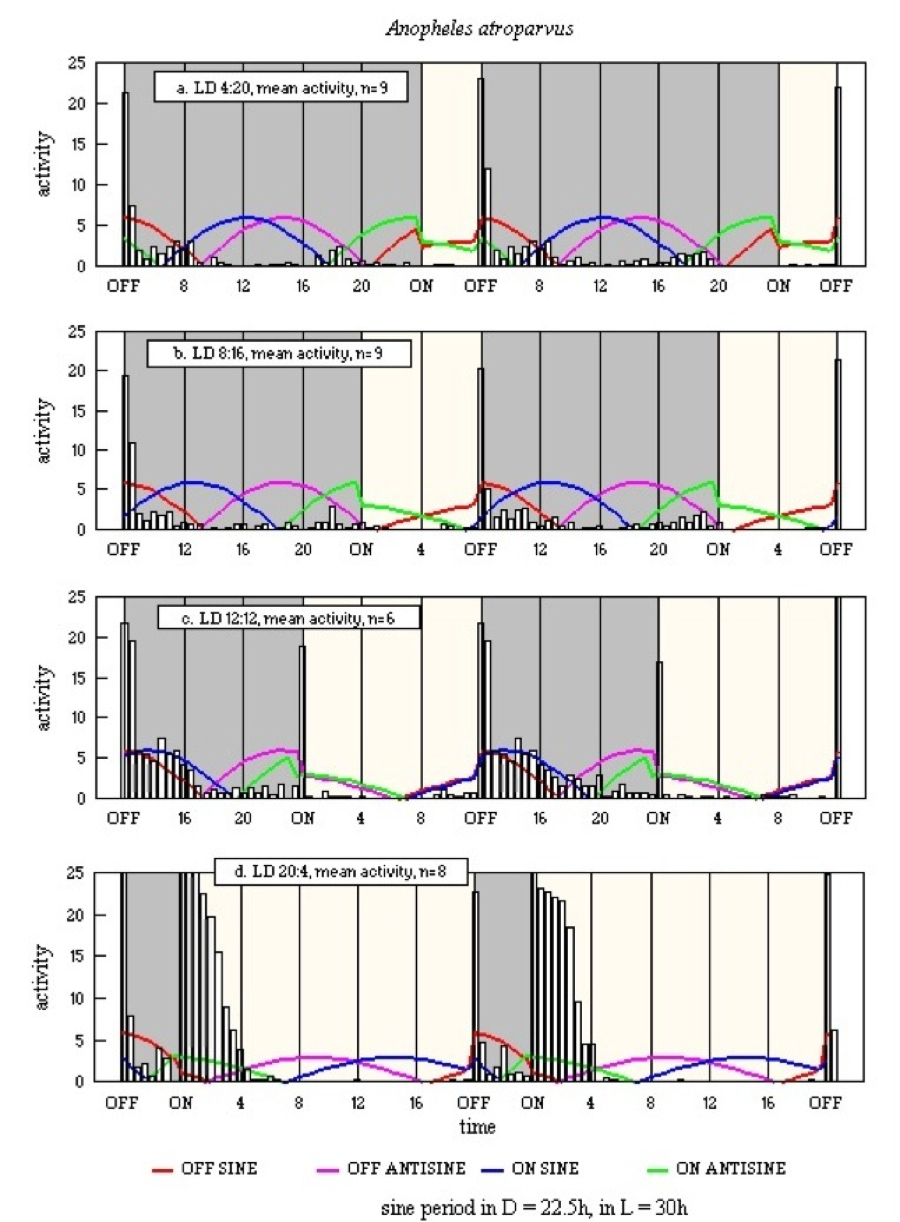

Biological Clocks in Mosquitoes - Section 2
|
Anopheles atroparvus, Anopheles farauti, Anopheles stephensi and Culex pipiens pipiens were studied, with summer and winter populations of the latter.
An. atroparvus is a European species found between latitudes 30°N and 60°N.
Figure 42 shows the histograms of activity in a range of LD regimes, with the four sine waves plotted with Dt = 22.5h and Lt = 30h. In all the LD regimes, the E activity underlain by the OFF SINE is strong, but the effect of the ON SINE seems to contribute to the lower level activity following light-off. The M peak seems to be determined principally by the ON ANTISINE, with little involvement of the OFF ANTISINE.
Figure 42

Figure 43 shows the histograms of activity in a range of LD regimes, with the four sine waves plotted with Dt = 22.5h and Lt = 24.5h. Examining the five LD regimes shows that all four clocks could be having a controlling effect.
Figure 43
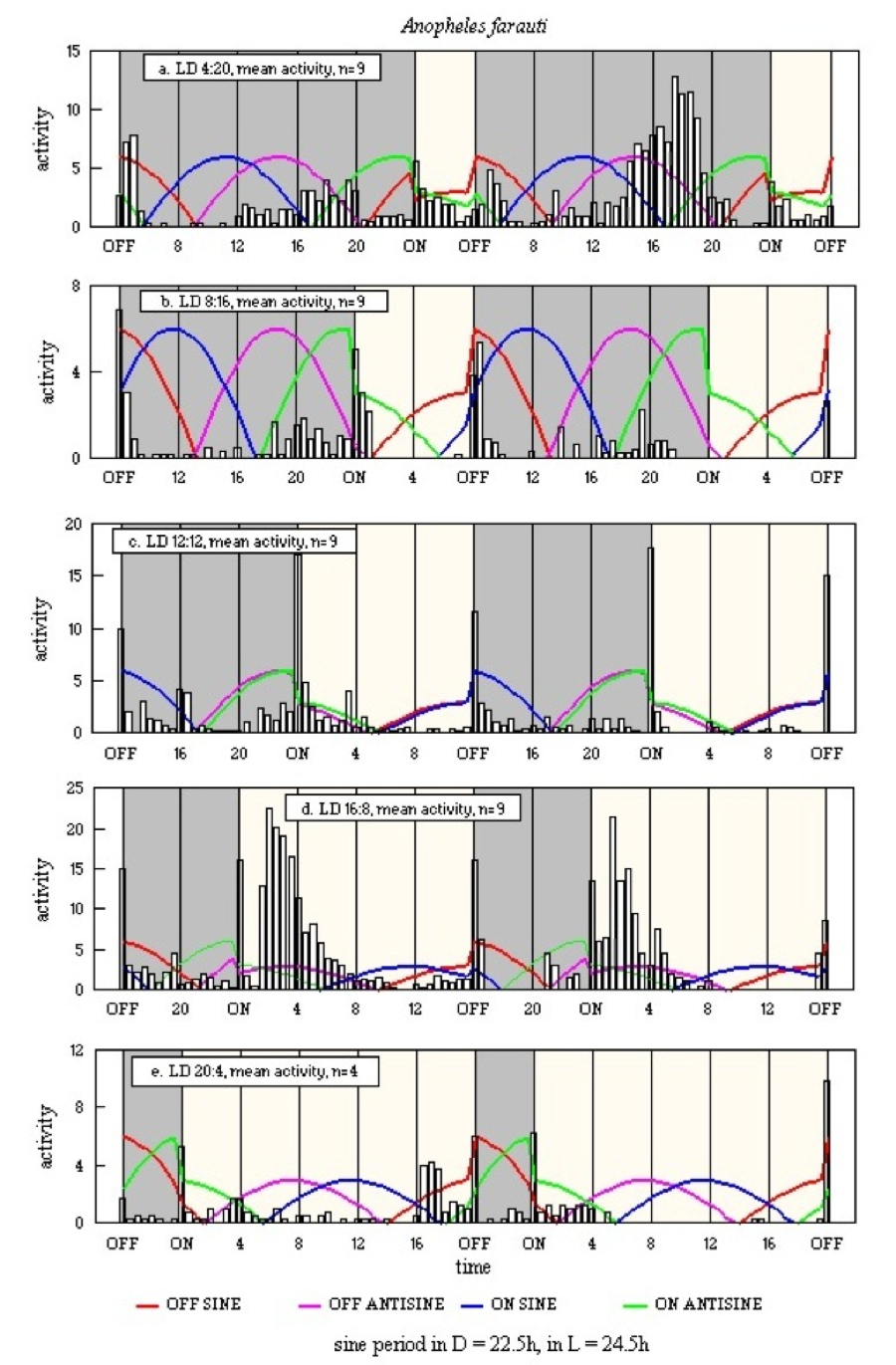
Figure 44 shows the histograms of activity in a range of LD regimes, with the four sine waves plotted with Dt = 22.5h and Lt = 26h. The two clocks waves appearing to exert the most influence are the OFF SINE, underlying a large E peak in all five LD regimes, and the ON ANTISINE. Especially in LD 20:4 (see Figure 44e), however, the other two clocks may be leading to the low upsurges in activity. In LD 4:20 the effect of ON SINE is shown by low level activity in D at 8-12h.
Figure 44
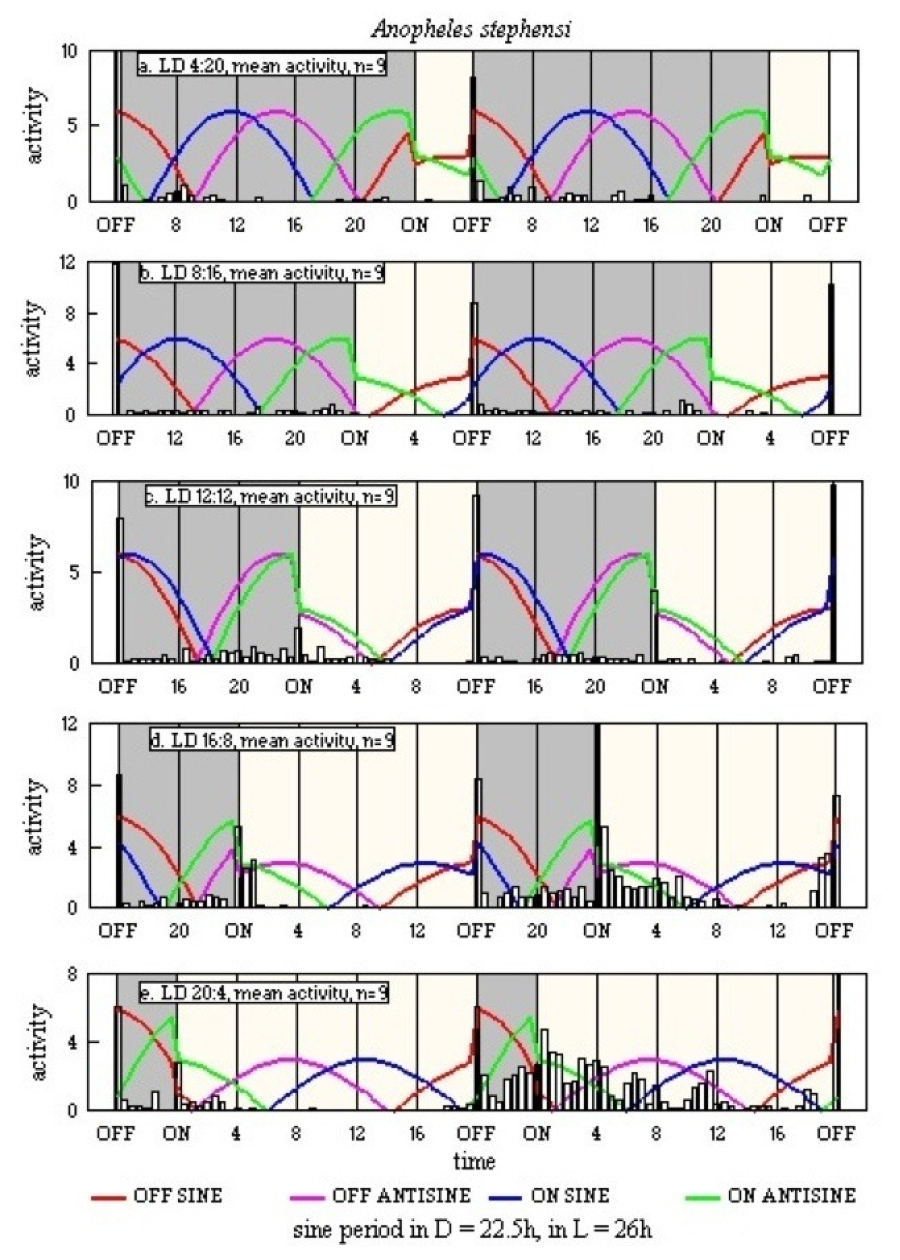
First the histograms of the activity of mosquitoes of the summer generation (normal LD 16:8) are shown in Figure 45, with sine waves with Lt = 30h and Dt = 22.5h overlaid. Both OFF SINE and ON SINE have clear effects. OFF SINE gives rise to the sharp E immediately following light-off and the effect of ON SINE is seen in the wider activity shifting from after light-off in LD 4:20 to before light-off in LD 20:4.
Figure 45
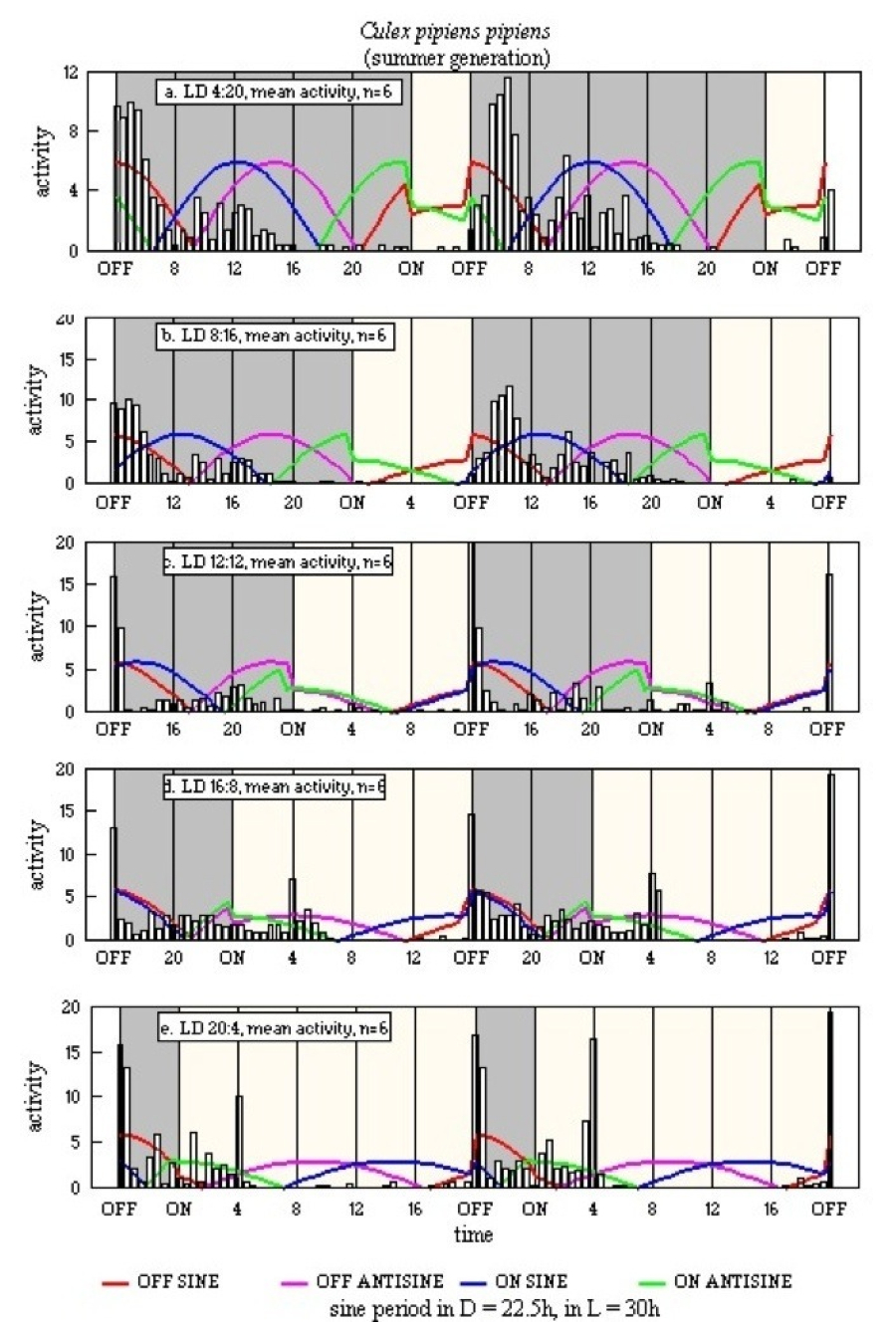
The results of the winter generation, which normally would become active when the natural LD was about 12:12, are shown in Figure 46, with the sine wave Lt = 24.5h. The effect of the clocks is similar to that shown in the Summer generation, with separation of peaks due to the four clocks shown across the spectrum of LD regimes.
Figure 46
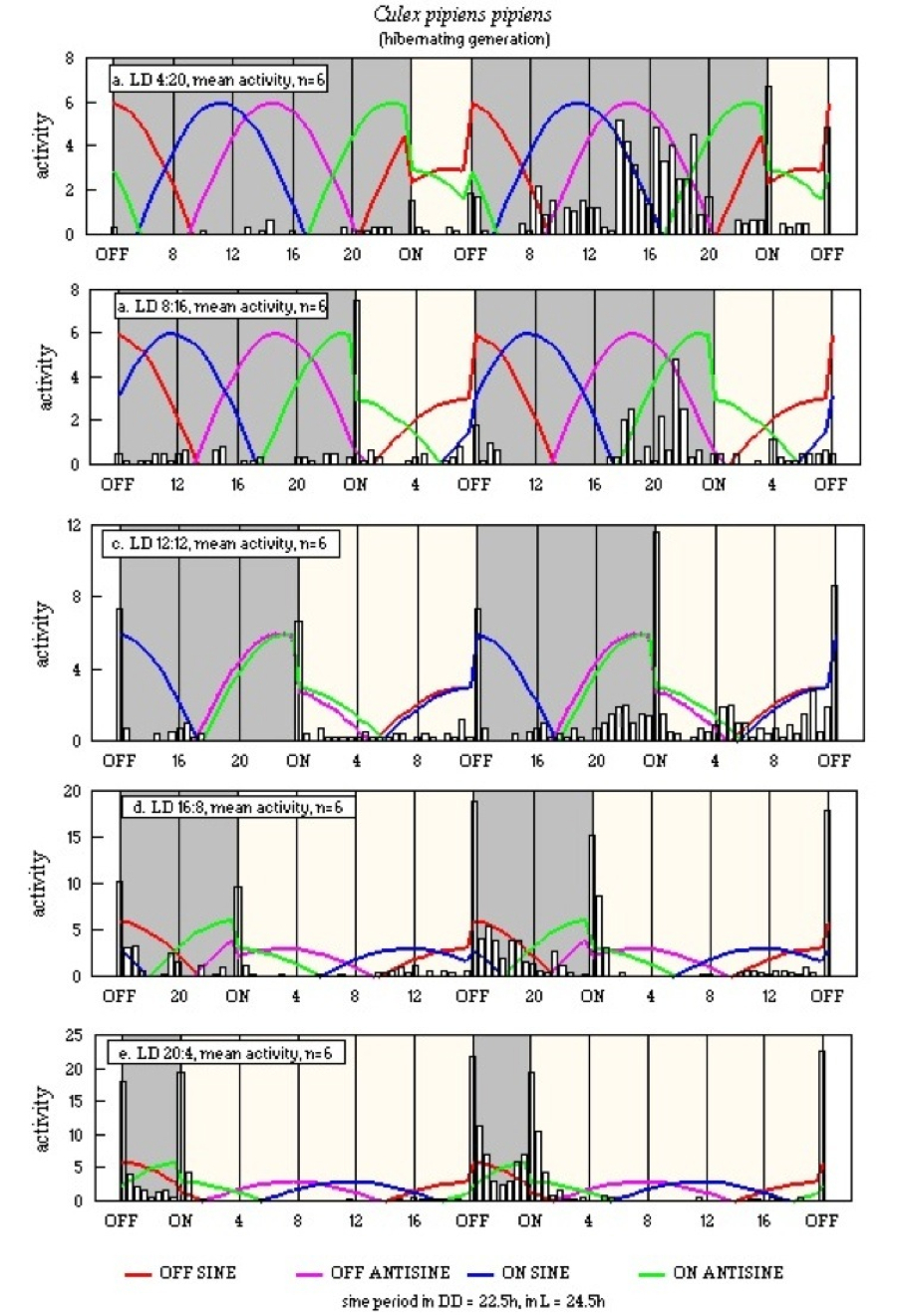
|
©1998, 2010 - Brian Taylor CBiol FSB FRES 11, Grazingfield, Wilford, Nottingham, NG11 7FN, U.K. Comments to dr.b.taylor@ntlworld.com |